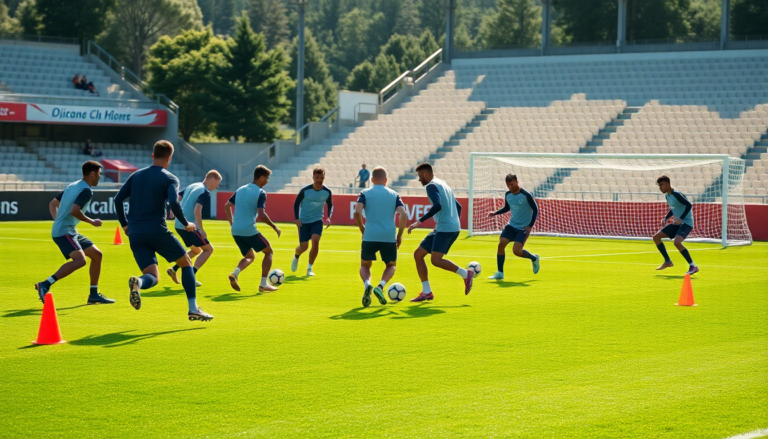Argomenti trattati
As we eagerly await the 2025/2026 football season, excitement is in the air. Fans and analysts are buzzing about the themes of intensity, pace, and pressure, which have become pivotal in evaluating performances across Europe’s top leagues. With every match, these discussions only deepen, particularly with both club and national competitions on the horizon. The way teams train has shifted significantly, and understanding this evolution is essential for anyone passionate about the game.
The Evolution of Training: A New Approach
As the new season approaches, it’s clear that training strategies have become increasingly sophisticated, building upon lessons learned from the past. Coaches now adopt a structured approach to physical conditioning that has been thoroughly refined. Gone are the days of monotonous stadium steps or lengthy forest runs. Today’s training regimens include a variety of exercises designed to boost players’ physical capabilities while also minimizing injury risks.
Have you ever wondered about the differences in training intensity between leagues? There’s growing curiosity, especially regarding the Premier League. Statistics reveal that players in this league cover an impressive average of 13 kilometers per match, while their Italian counterparts typically run around 11.5 kilometers, particularly among midfielders. What does this say about the tactical frameworks and physical demands inherent to each league?
The Tactical Frameworks at Play
Insights from former coaches who’ve worked with Premier League teams show a clear consensus on the tactical differences. The Premier League is renowned for its high-octane style of play, which prioritizes aggressive pressing and rapid ball recovery. This approach requires players to be active and agile, ready to cover significant ground on the pitch. Consequently, training regimens are tailored to push athletes to their physical limits, ensuring they are well-prepared for the fast-paced demands of the matches.
High-Intensity Training (HIT) has emerged as a fundamental aspect of preparation in England. By maximizing effort during training sessions, coaches enhance players’ endurance and performance under pressure. Alongside traditional strength and endurance workouts, there’s a keen focus on technical drills executed at blistering speeds, mirroring the demands of modern football.
Lessons from the Pitch: Embracing Mistakes
The lightning-fast nature of English football demands a high level of technical proficiency. In contrast to Italian matches, where simple mistakes can squander opportunities, Premier League players are trained to bounce back quickly from errors. This culture encourages players to view mistakes as learning experiences rather than failures—a crucial mindset in a sport where every second counts.
As the season unfolds, maintaining a consistent training regimen proves vital. Intense pre-season workouts lose their effectiveness without a structured approach during the competitive months. Neglecting to uphold training standards can lead to increased injury rates, undermining the benefits gained from rigorous pre-season preparation.
Ultimately, delving into the intricacies of training and performance in football offers invaluable insights into the upcoming season. With coaches and players focusing on intensity, technique, and tactical awareness, the 2025/2026 season is poised to showcase thrilling competitions that reflect the ever-evolving landscape of the sport. Are you ready to witness how these developments unfold on the pitch?

